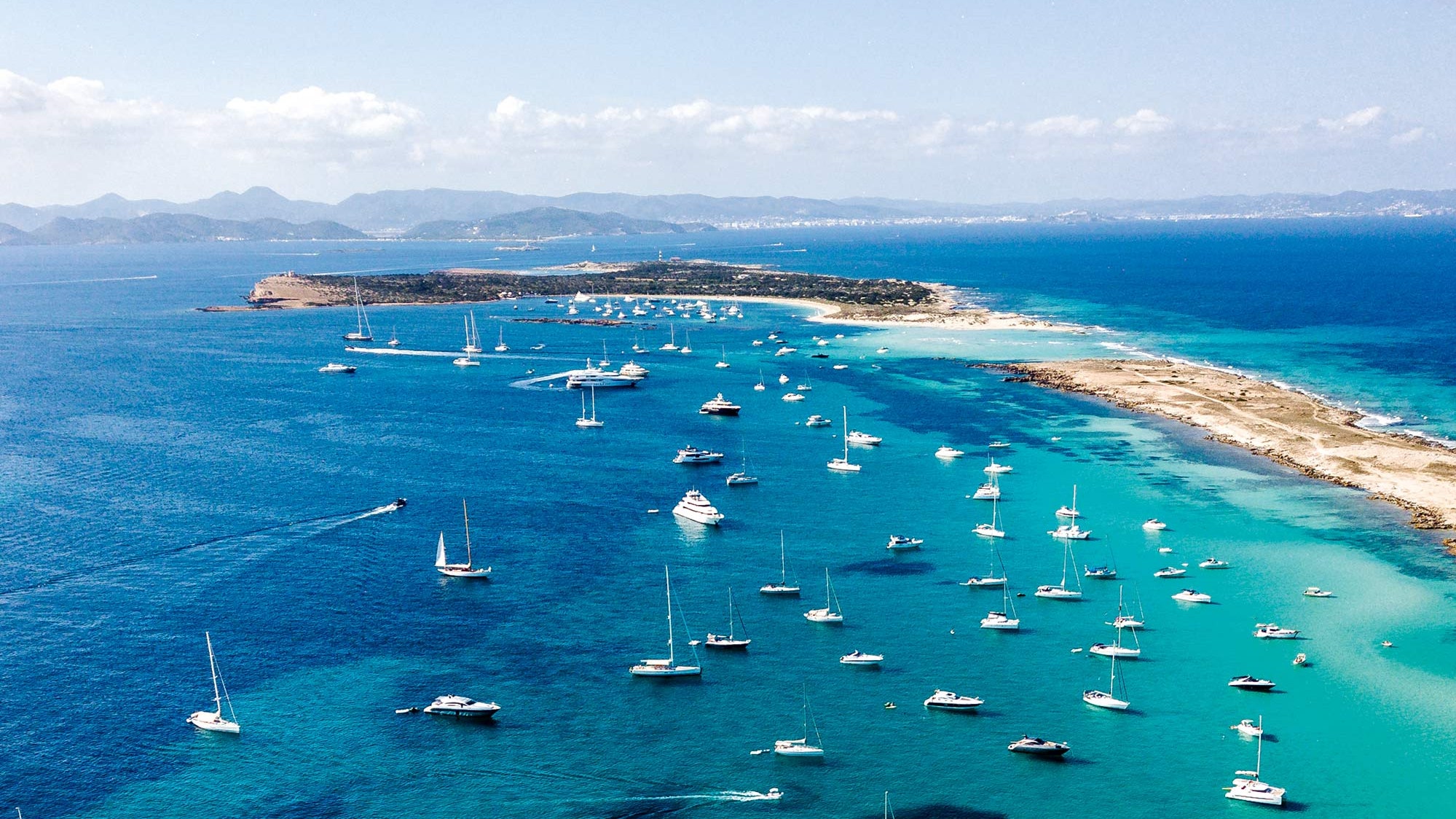Exploring Formentera: A Traveler’s Paradise
It was more than a decade ago, but it could have been yesterday. Speeding down Formentera’s only real highway, kicking up clouds of billowing dust on the way to a midnight supper at Can Carlos. My espadrille-clad feet propped on the dashboard of our ancient Golf Cabriolet, wiry laces twisting like tendrils around my conker-brown ankles. James drove barefoot and shirtless, as I lay back in the passenger seat and watched great swathes of creamy stars swoosh by overhead, suspended in a fathomless navy sky. The night air was so hot it caught in our throats like honey. James and I had fallen in love only that summer, and Formentera was our bolthole, our refuge, an offshore escape from the gossip mill of Ibiza in peak season. Over the years that have followed, the island has become a constant in our lives; a place so etched in my consciousness that, if it didn’t exist, I’d have to invent it.
The Geography of Formentera
Formentera is a geographic anomaly, a curiously shaped island barely connected in the middle, honed by four wild winds and thousands of years of shifting tides. It is the smallest and most southerly of the inhabited Balearic Islands, home to Roman salt pans and high plateaus, Bronze Age settlements, and strange seabirds. Just over a mile wide at its narrowest point, it has a jagged coastline defined by towering cliffs, tottering lighthouses, and endless bone-blonde sands. Some 12,000 inhabitants are scattered through its six whitewashed villages, a self-sufficient and resilient community accustomed to burning summers, stormy winters, and desolate periods when those winds – the Tramuntana, the Migjorn, the Llevant, and the Ponent – wreak havoc on the treeless plains.
The Unique Vibe
Until as late as the 1960s, the locals on neighboring Ibiza were suspicious of Formentera. The island seemed to be for pirates and sirens, where spirits lived in caves and crops refused to grow. Half a day’s choppy boat ride away, Formentera was the end of the world. The boat may no longer take half a day, but with no airport or other means of access, it’s only the migrating flamingos that flit in and out with ease. This place exists in autonomy, in relief; a dry, febrile land of cuboid houses and scrawled horizons. If Ibiza is juicy, abundant, and technicolor, Formentera is bleached out and desaturated, the island equivalent of a Super 8 film.
Exploring the Hidden Corners
For eight months of the year, it simmers with a heat so slippery and mercurial the horizon appears to dance. Formentera is dissected by one main road, a gravelly two-lane highway flanked with fruit shacks and retro garages, their faded Repsol signs peeling in the sun. Countless dirt tracks scratch outward from the highway like the legs of a centipede. Exploring these caminos has become an obsession. They criss-cross one another senselessly, ending abruptly at pearly beaches, time-warped hotels, or rocky coves edged with fishermen’s huts. We drive these lanes lazily, put-putting along in a hired Citroën Méhari while our three sandy children doze dopily in the back.
A Culinary Paradise
Little as it may be, Formentera is lauded as a foodie’s paradise. Two Michelin stars make for impressive stats, particularly on an island that, until 50 years ago, relied upon the greasy-grey Balearic shearwater seabird for protein. Can Carlos – a twinkly walled garden with an open grill – is my favorite place to eat on the planet. Food feels elemental on Formentera, to be devoured bite after sandy bite.
The Allure of Formentera
Elemental is perhaps the best descriptor for this wild little island, where life happens outdoors. Nowhere else do I so enthusiastically forgo the brushing of my hair, or go so resolutely barefoot, or dress so haphazardly if I bother to dress at all. Formentera grips me in a way that I can’t seem to wrap my words around. It is a fever that I just can’t shake, a fierce longing that feels primal.
Sunset at Kiosko 62
As dusk approaches, Kiosko 62 fills with bodies, clustering around the ramshackle bar or sitting on the rocks like gulls. The wild-haired owner Francisco juggles beer bottles as Nina Simone blasts from the crackly speakers. The olive-green cargo netting of Kiosko’s roof is silhouetted in the setting sun, a jagged flag against a painted sky. As night falls, the air fizzes with thundery heat, and the lighthouse at Cap de Barbaria blinks out its warning, reminiscent of the Barbary Coast pirates who once plundered Formentera.




